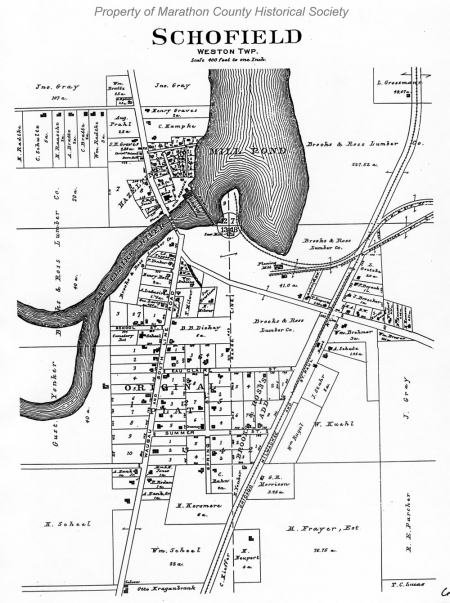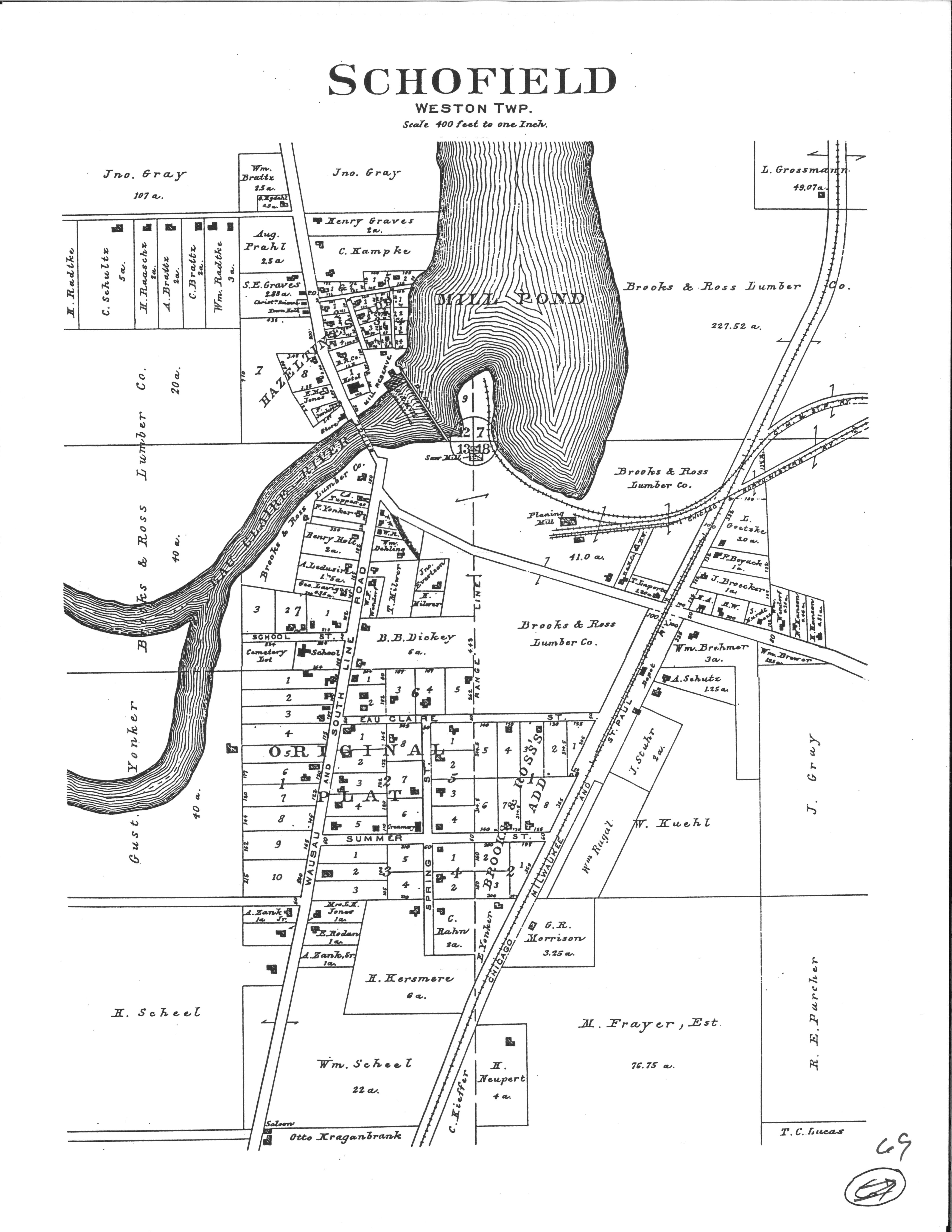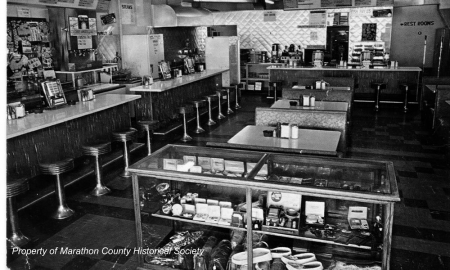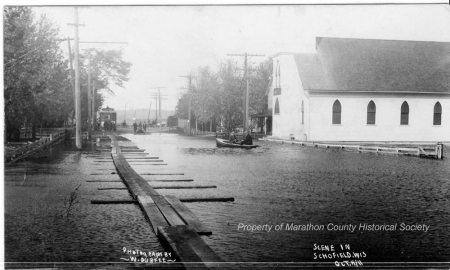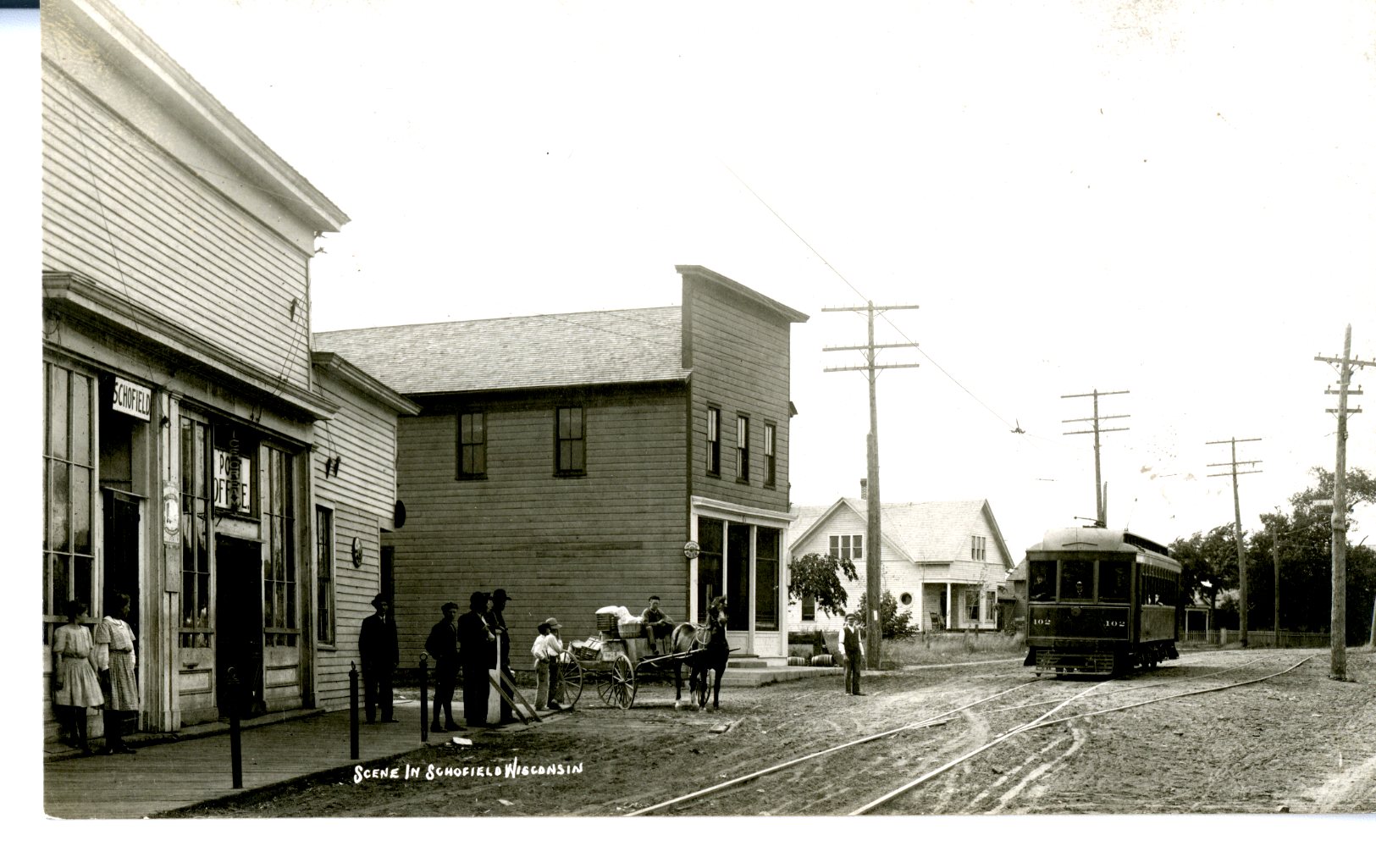Search our Places Database
Schofield, City of
Return To List of Locations | Back to Search
For more information on this location, please contact our research library.
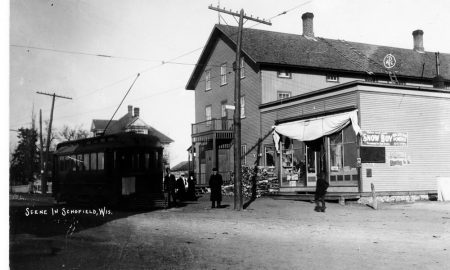
Author:
Mary Moltzan
Location:
T. 28 N. - R. 7 E., Sec. 12,13, &14 & T. 28 N. - R. 8 E., Sec. 7 &18, Township of Weston
Formallized:
1904
Background:
Population: 1905 -744; 2000 - 2,117.
During the 1840s, what is now Schofield was called Eau Claire, with the Eau Claire River running through. The name was changed to Sherman and then to Schofield. Schofield grew up as a sawmill town. The mill on the river was first run by Houghton and Battin and was later owned by Dr. William Scholfield. He is considered the founder of the village and it is named after him (See Post offices for the dropping of the "l" to form Schofield). Dr. Scholfield laid out the village, erected homes, established a store and built the necessary shops to keep the mill in good repair. Dr. Scholfield died in 1863. The mill was owned by his widow and then her brother, C. P. Haseltine, in 1892. The Ross and Brooks Lumber Co. purchased the mill in 1883 and ran it until 1935.
First Public Official:
Christ Volkmann, county board supervisor
Biography:
1st Supervisor
Post Office Established:
January 19, 1865
First Postmaster:
Stephen Durkee
About The Post Office:
Mail came to the post office by stage. The original post office, established on January 19, 1865, was called Sherman after General Wm. T. Sherman.  The name was changed from Sherman to Schofield Mills on December 9, 1874, with Chas. P. Haseltine as postmaster. Supposedly, the request for the P. O. name change was sent to Washington as
Railroad:
The Chicago, Milwaukee, and St. Paul runs north and south through the city.
Churches:
Mrs. Mary Scholfield founded the first Sunday school in 1868. Before 1900, many people attended churches in Wausau.
Peace United Church of Christ - dedicated on October 5,1902
Christian Science Church - erected in 1897
St. Peter Evangelical Lutheran Church - original church dedicated on December 14, 1902
St. Therese Parish - dedicated on October 8, 1950
Schools:
Horatio J. Sprague deeded an acre of land for a school site in 1860, a short distance south of the bridge on the "slight hill." In the deed, it is designated as the "Schoolhouse Lot."
Janie Armstrong was the first teacher in the village, teaching the first public school in a rough board shanty. A small, white school was then built, and Janie Armstrong was also the first teacher there. A larger, brick school was erected and ultimately destroyed by fire in 1922. After the fire and until a new school could be built ,classes were held in other places like the city hall for third-graders and the old Christian Science Church for first-graders.
St. Therese School - first classes were held in September 1954
Business:
The Eau Claire Villa, owned by F. B. Fullmer, was a popular spot for recreation in the early days. The street car service, running from Wausau to Schofield from 1907-1934, ran past the Villa on 600 Grand Avenue. In the summer of 1908, the street car line was extended to Rothschild.
Utech's Store, store and hotel of C. H. Utech
Boarding house
Blacksmith shop and wagon shop owned by Julius Wendorf
Yonkers Saloon
Store and dance hall owned by Louis Jones
Dairy
Electric Company
Industry:
Sawmills - one of them being the Brooks and Ross Sawmill
Shingle mills
Stories:
1. The flood of 1912 was the worst flood to ever hit Schofield. The water got so high it washed out the Schofield Bridge and part of the dam. A pontoon bridge was built as a temporary replacement until the new bridge was built several years later. Water filled basements. One house was washed from its foundation. A man and a team of horses were lost trying to rescue the wife of that household. Someone finally rescued her with a boat.
2. When automobiles first came out, Mr. Fullmer had an International, a vehicle with high wheels and hard tires. It was yellow and open and did not move too fast. Even so, it frightened horses into running away. Townspeople called it "Fullmer's Folly."

